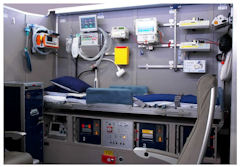 A recent report regarding a traveler from south Florida highlights the need for evacuation coverage. Zena Friedman and her sister were vacationing in Bali, a trip they saved for for years, when she was run over by a taxi. With major injuries and in need of urgent medical care, doctors indicated she would have to be transported to Malaysia.
A recent report regarding a traveler from south Florida highlights the need for evacuation coverage. Zena Friedman and her sister were vacationing in Bali, a trip they saved for for years, when she was run over by a taxi. With major injuries and in need of urgent medical care, doctors indicated she would have to be transported to Malaysia.
Unfortunately, the sisters did not have travel insurance and the cost of transport alone could run into hundreds of thousands of dollars. So friends started a Facebook campaign (https://www.facebook.com/helpzenaheal) to collect donations to cover her medical evacuation expenses. Ms. Friedman ultimately underwent surgery in Malaysia before returning to Miami last week on a flight with paramedics who donated their time.
While we’re ecstatic that Ms. Friedman is getting the care she needs and we wish her well on her recovery, her experience is a traveler’s cautionary tale for at least one reason: her treatment would likely have been more timely if she had carried travel insurance.
Emergency evacuation coverage provides for medically necessary evacuations to a medical facility when the insured is injured or so ill as to be unable to travel by commercial means. This coverage also provides for medically equipped flights to return home – even the repatriation of mortal remains should you not survive.
Out of curiosity, we decided to get a travel insurance quote to see what the approximate cost might have been for these sisters.
We used the following details as an example:
- Two travelers, ages 61 & 63
- Travel dates 11/4 – 11/18/2011
- Florida residents
- Destination Indonesia
- No trip cancellation coverage
- RoundTrip Economy from Seven Corners (cost $53) includes $250,000 in medical evacuation coverage and $25,000 in secondary medical coverage.
- Trip Protector Lite from Travel Insured International (cost $58) includes $100,000 in medical evacuation coverage and $10,000 in secondary medical coverage.
- Preferred from Global Alert (cost $69) includes $500,000 in medical evacuation coverage and $100,000 in secondary medical coverage.
